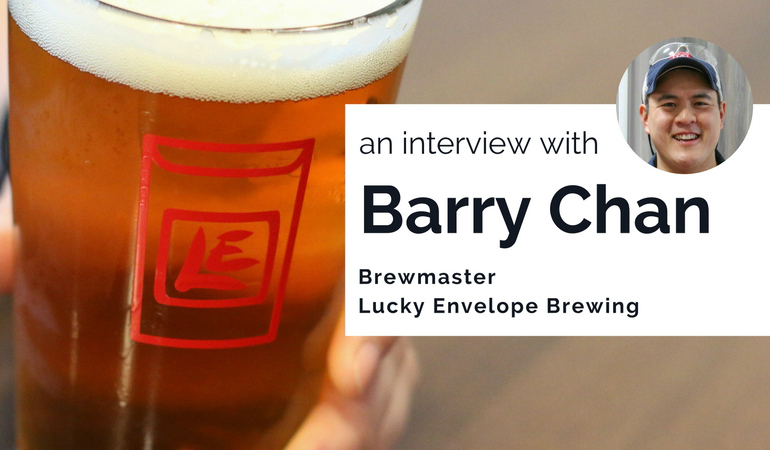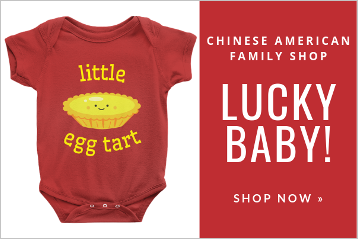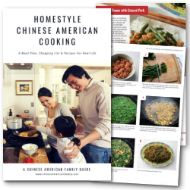This article is part of our Spotlight on Chinese American Entrepreneurs. Sign up for our newsletter to receive family-friendly activity, recipe and craft ideas throughout the year!
Lucky Envelope Brewing, the award-winning Seattle craft brewery, made headlines this spring when it released a beer based on a 5,000 year old recipe from China to celebrate the Lunar New Year. It was a cultural coup for a brewery that’s earned its industry bonafides with IPAs and lagers more familiar to American beer drinkers.
I recently chatted with Barry Chan, brewmaster at Lucky Envelope Brewing, about what it means to build a business that incorporates cultural influences. He generously shared his path to the craft beer industry, why mainstream credibility matters and the creative opportunities that Chinese flavors offer to brewers.
Lucky Envelope Brewing celebrates its second anniversary this May and takes its name from the traditional exchange of money in red envelopes during Chinese celebrations. The brewery features a full range of American IPAs, German-style lagers and rotating culturally-inspired beers.
Barry shared his perspective from Lucky Envelope’s first two years in business. He talks about launching a new brewery, balancing culture with mass appeal and the development of China’s craft brewing scene. These are edited excerpts from our conversation.
—
How did you and your business partner, Raymond Kwan, launch Lucky Envelope Brewing?
It was the combination of a few random events. I moved to Seattle in 2008 after graduate school and challenged myself to learn how to brew beer. I started brewing at home, got caught up in the science and fun of crafting my own recipes, and soon got serious to the point of entering competitions. I realized that working in a large corporation wasn’t where I wanted to be. The dream of opening a brewery kept resurfacing.
I’ve known my business partner, Raymond, since 2005 or 2006 through mutual friends. Raymond has always known he wanted to start a business. He moved to Seattle in 2010, worked at the Gates Foundation, then left in 2013 to set out on his own.
We were on similar career paths, then stepped back and realized we were at the same point trying to achieve something a little bit different. We started working on a business plan in September 2013, then signed a lease for the brewery space in August 2014.
What lessons have you learned during your first two years in business?
The product we’ve put out has been received very well by the public. For us, entering competitions and doing well was definitely important because the validation came from blind judging, instead of just from friends saying “Oh, this is great!” at a party. Ray loves the business side and I love brewing, but marketing was a steeper learning curve for both of us. That’s the one thing we had to get ourselves up to speed on much more quickly than we were expecting.
The name Lucky Envelope Brewing honors your Chinese heritage. Can you share a favorite memory that reflects that connection?
For me, lysee was one of those things we always received for Chinese New Year and Christmas. As a little kid, you’d run away and count your money because it was really exciting. When my daughter was born 2 1/2 years ago, we received them again. I’m used to traditional red envelopes with a dragon, oranges, a phoenix or a fishing boat on them, but I hadn’t paid much attention to new designs with Hello Kitty or pink-colored envelopes. It was really interesting to see how the tradition had evolved, just like businesses have to evolve to stay relevant.
Let’s talk beer. This year you released two special Lunar New Year beers, the first of which is based on a 5,000 year old recipe from China. How did you create what you called the Mijiaya Historic Chinese Beer?
It was fun. I had read a couple of articles talking about this 5,000 year old beer recipe from China that had just been discovered by archaeological researchers. On a whim, I emailed the source, Jiajing Wang, and she was kind enough to forward her academic paper to me. It was really fun to learn about the work, where the site was located and how they identified the grains in the vessels found at the excavation site. To know that beer was being brewed in a similar fashion in central China and Mesopotamia so many years ago was really eye opening to me.
There were 488 starch grains identified and the paper broke out the percentages of grains in the beer. In the first couple batches, we played around with the quantities of the grains, but found that using the percentages they listed actually made for a pretty tasty beer. On the fermentation side, we ended up doing three test batches before we had one that we thought would be palatable for everyday beer drinkers.
We didn’t expect the press coverage and interest the Mijiaya received. We went through a full keg of the beer in a little bit over an hour. People wanted to try a little sip, then they’d have a whole pint.
Tell me about the second Lunar New Year beer, the Buddha’s Hand Citron IPA. What does citron’s distinct lemon flavor add to an IPA?
From my memory, citron is one of those fruits that was cut in half and left sitting on one of my relative’s bookshelves as an air freshener. It’s so intense with a natural edge that reminds me of lemon drop candies. Using citron is a reflection of what’s going on in craft brewing right now. Beers like a grapefruit IPA are really popular and it’s a pretty easy leap to go from grapefruit to citron. The beer has an intense and unique citrus flavor, without being overly foreign to people.
What are some other Chinese ingredients that might be natural to incorporate into brewing?
The Mijiaya opened up a lot of possibilities. It uses a lot of ingredients, like millet and Job’s tears, that provide interesting flavor characteristics, but which won’t put people off. We think using millet and Job’s tears could replace corn or rice in a light lager or cream ale. Those are examples of basic ingredients you can switch to add a different character to a beer.
Then we can just jump into fruits. We’ve been trying to source some lychee puree and we’ve been playing around with the black currant juice called Ribena. We created a beer with jackfruit for Seattle Beer Week and I think Chinese dates could lend some nice flavor if you age them in a beer.
Two more come to mind. For the Mid-Autumn Festival, we’re trying to make a beer with lotus seed paste. And for Lunar New Year last year, we created an infusion with five spice powder and vanilla for our Imperial Porter.
It’s inspiring to hear how you honor your cultural influences, but I imagine that carries the risk of narrowing your audience. How do you combine culture and business, while maintaining as broad an appeal as possible?
We definitely encountered that dilemma when we opened. How do we pay respect to our heritage without being pegged as literally “the Asian brewery”? We were really cautious initially and made a conscious effort to avoid alienating beer drinkers and pigeonholing ourselves.
The early awards we won were helpful. Six or eight months after we opened, we won a bronze medal at the Great American Beer Festival for our Helles Lager, which is a light, German style beer. In 2016, we won a gold medal for American IPAs at the Washington Beer Competition. Those are two awards specifically that we can hang our hats on as a brewery to show we know how to make the gamut of beers. They show we’re a solid brewery and give us the leeway to explore, have some fun and pay some respects without being overly gimmicky.
We like to describe our brewery as culturally-inspired. It’s intentionally generic because we don’t need to draw inspiration exclusively from Chinese or Asian ingredients. For instance, I love German lagers and there’s a lot of history there to explore. Also, our brewery is located in the Ballard neighborhood of Seattle, which has a lot of Nordic heritage. For Swedish Flag Day, we made a beer with smoked malt and juniper boughs. Being “culturally-inspired” doesn’t restrict us to just Chinese.
There’s quite a craft beer scene developing in China right now. What future potential opportunities do you see for collaboration?
Especially in the Seattle area, the attitude toward beer is much more developed than it is in China. It takes time and education. As China grows more affluent, they’ll have the ability to invest in new flavors, so it’s only a matter of time before they get to the craft level.
In terms of collaboration, there’s definitely a lot of opportunity, and it doesn’t have to be based on just exchanging Chinese or American ingredients. As an American brewer, it would be a lot of fun to bring some of our American-style IPA inspiration over to China and then see how the audience reacts to a beer that is much more bitter than they might be used to by drinking mass produced lagers.
###
Your turn! Have you visited Lucky Envelope Brewing in Seattle? What inspiration do you draw from Barry’s experience?





Leave a Reply